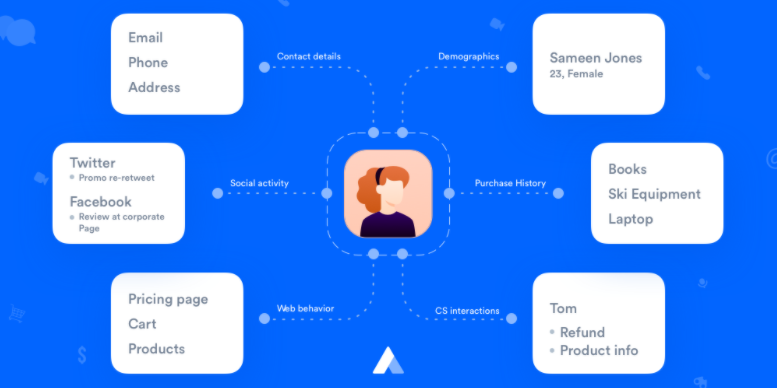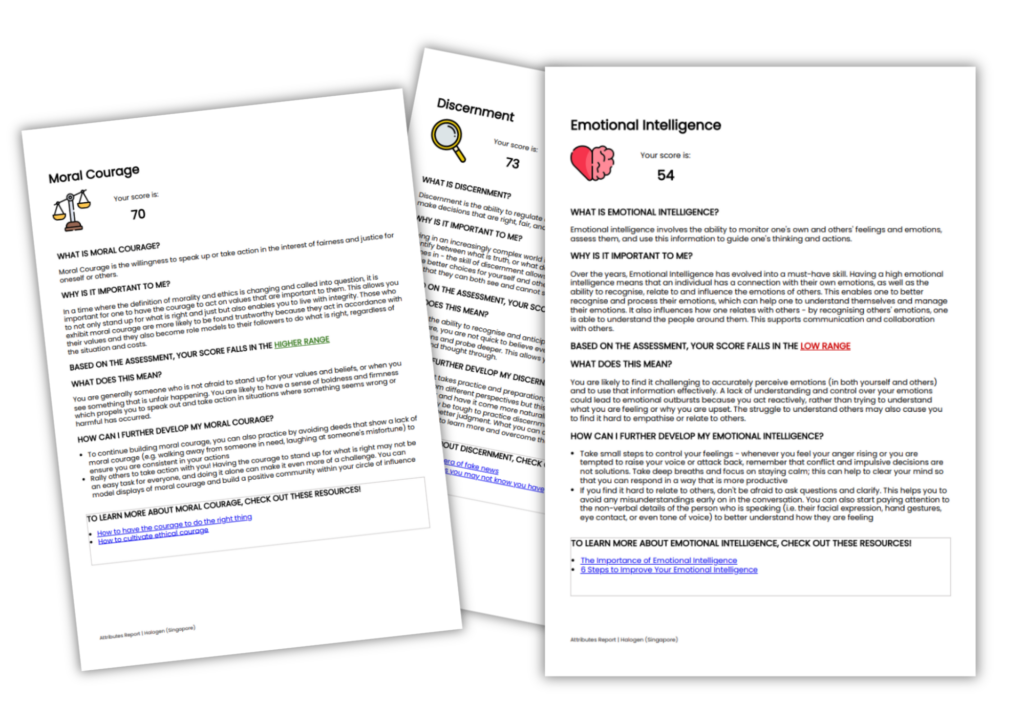Customers are the soul of every business, and mapping their needs and preferences can help you tailor your products, services, and experiences to boost customer loyalty and sales in the long run. For the same reason, customer journey mapping is gaining relevance across the world – promoting a more customer-centric way of doing business.
Benefits of customer journey mapping
Customer journey mapping enables you to visualize the various ways in which a customer interacts with your brand and codifies it so that it can be shared across the organization for actionable insights like via AI Chatbots, social media, contact form, E-mail etc.
According Mcorpcx best-in-class CX leaders are likely to use customer journey maps to drive measurable results, like 200% greater employee engagement and 350% more revenue from customer referrals. Other benefits of customer journey mapping include a 54% greater return on marketing investment, over ten times improvement in the cost of customer service, faster sales cycle, and a significant increase in positive social media mentions. Unfortunately, the same study reveals that only 36% of companies have a streamlined process to map customer journeys. Well, that figure is undoubtedly a great bucket of opportunity, and this post will help you set your customer journey mapping in place to grow your business significantly.
Let’s start by understanding what is meant by the customer journey exactly?
The customer journey can be defined as a collection of experiences and touchpoints that customers have with your brand until they make a purchase decision – and even beyond. Put simply, it is the sum total of interactions that a customer has with your brand across the span of his or her relationship with your company. In B2B, the customer journey takes up a more complex form, as the purchase decision is not made by an individual but a group of decision-makers. Thus, the number of touchpoints and interactions increase manifold and occur simultaneously with several people or departments.
Customer journey mapping comes in handy at this point, giving you a holistic view of all the steps that customers go through to purchase your product or service. When viewed objectively, such a map can help you identify the pain points faced by your customers at every step, comprehend their expectations, and curate a better experience by providing the right service at the right time.
For example, when you use an interactive heatmap tool and you find that most customers exit your site at a particular point, it is an indication that something is not up to the mark. However, you can treat this insight as an opportunity to revamp your UI by making your site more straightforward to navigate and minimize churn.
How to create a customer journey map?
A customer journey map displays each step of the customer journey from the initial stages to post-purchase support. Thus, it requires insights from several teams, including marketing, sales, and customer service, making it a collaborative exercise. Before you start mapping the customer journey, it is also essential to be clear of your goals, basis which you will develop the buyer personas to carry the process forward.
It is, of course, possible to create a customer journey map without building personas. However, paying attention to customer personas will increase the efficacy of your journey mapping. In general, your customer personas may be divided according to your customers’ demographics, purchasing habits, values, or goals. For example, if you sell live chat software, your customer personas may include e-commerce players, B2B companies, as well as the key stakeholders in these firms that call the shots.
1. Buy your products
There are two ways of discovering your customer touchpoints. One is through actual customer feedback and the other by buying your products yourself. Yes, you can always pretend to be a prospective customer, who doesn’t have much knowledge of the brand and try buying one of your company’s products or services to check the experience.
We suggest following all the regular steps, like researching online, clicking on ads, a website search, adding products to the cart, getting in touch with the support team using the live chat widget on the site, etc. It is also worth repeating the process on different devices like mobile, desktop, and tablet to ensure a consistent experience.
After completing this exercise, note down the steps and touchpoints in the order you visited them. Some frequent touchpoints are social media, website, paid ads, blog content, etc.
Also note down points like the journey milestones, any difficulties that you may encounter on the way, or something that may improve the customer journey.
2. Make use of data
Customer journey mapping is a collaborative exercise requiring inputs from various customer-facing teams, like sales, marketing, and support. However, this often turns out to be a major hindrance as most companies continue to work in siloes, leading to fragmented data, which is hard to unify into a single view of the customer’s journey with the brand.
To overcome this challenge, you may invest in a customer service platform that provides you with a unified customer view. Such software integrates multiple customer service tools to give you a single source of truth for customer information. This means you can view data from disparate systems, like e-commerce, web analytics, customer support, social media, etc., in a single dashboard, making it easier to crunch the numbers and make an accurate representation of your buyers’ journey.

Example of single customer view
3. Ask customers
As you may already know, customer feedback is the most important to support your findings from all the steps mentioned above. In fact, if you want to know what customers think – the best way is to ask them and understand their expectations first-hand. You can prepare short surveys using Google Forms or other such tools to gain relevant information. Some of the questions you may ask, include:
- Where or how did you first hear about the company?
- How was your first purchase experience with the company? Did you find it convenient to search for what you needed on the site? Which factors impacted your purchase decision?
- How many touchpoints did you interact with? Did you complete the purchase online or also visited the physical store?
- Have you contacted our customer support? If yes, which channel did you use, and what is your feedback on the service level?
- Have you interacted with our social media handles?
- Is there something you did not like about the website or something that frustrated you?
Of course, not all customers would be willing to complete the form, but you can always offer an incentive like a coupon or discount in return for the favor. Another idea is to use short surveys within the site to collect real-time feedback. For example, after a live chat session, you can ask the customer to quickly rate the conversation according to a fixed scale and add a description of the feedback if they wish to.
You may also invite regular buyers to share feedback or request them for an interview to understand the steps in their journey better.
4. Visualize the journey
Broadly, there are five stages [as represented in the image below] in every customer journey. The journey starts from the awareness stage and extends to after-sales support and beyond.

The last stage in the image above – use – refers to a vital part of the journey, which only begins after a user has purchased your product. It is here that you can build a lifelong relationship by enabling the customer to use your product correctly and gain the promised benefits. One idea is to improve your onboarding process by including product demos, self-help videos, FAQs, and an interactive UI to guide first-time users inside your app or software. These simple steps can dramatically boost customer satisfaction and even prevent churn to a great extent.
Besides, use the data you have gained from the previous points to fill up the following information at the relevant stages of the customers’ journey:
Touchpoints – Where would your customers go from specific touchpoints like a website or social media
Emotions – What experiences delight your users and what frustrates them
Pain points – Are there particular roadblocks or pain points that should be improved upon for better engagement?
Customer journey map example:

While this diagram may look complicated, it is quite easy to decipher the various stages in the buyer journey highlighted along with the associated pain points that need to be ironed out.
5. Be regular
Just like your customer experience, customer journey mapping is a constant process and needs regular updating. According to CXPA, organizations are most satisfied with the results if customer journey mapping is undertaken very frequently. For example, firms that conduct customer journey mapping every month report a more positive impact as compared to ones performing it bi-annually and annually. Not a very surprising observation considering that customer expectations are continually evolving and brands that regularly map their customers’ journeys are in a better position to anticipate and meet these requirements.
Parting thoughts
Today, customers don’t want to be treated like numbers but demand a high degree of personalization. Customer journey mapping certainly takes time and effort, but it’s useful in understanding your customers and their needs. If you really want to stand out, start simple with customer journey mapping to comprehend and even anticipate customer demands, resulting in better engagement and customer loyalty







